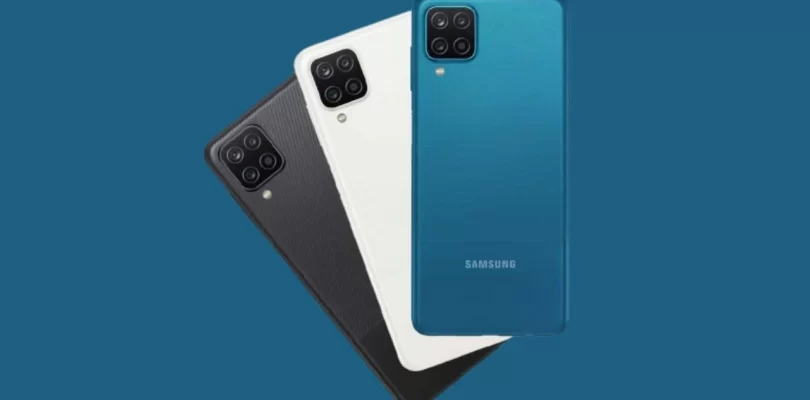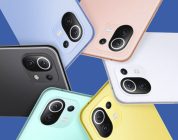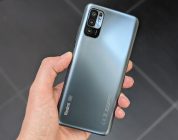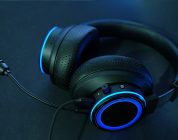We have spent a few days with the Samsung Galaxy M12, a mid-range mobile that moves in the line of 200 euros and is committed to bringing the best essence of Samsung to the most contained budgets. The software attracts attention, also the care put into the design. It is not the only thing.
Samsung has begun populating the mid-range with a varied selection of phones, and the Galaxy A is the proof. However, he was not satisfied with this family, the ‘A,’ which brought other models first presented in other countries. The ‘M’ combines economy, good battery, large screen and brand software; the main characteristic of the mobile that stars in our analysis, the Samsung Galaxy M12. Let’s see how it behaves on a day-to-day basis.
Sleek, thick, dominated by plastic and with a large screen
Samsung Galaxy M12 Review
As soon as the mobile phone is unpacked from its box, the Samsung Galaxy M12 reveals Samsung’s dedication to design: a 6.5-inch ‘Infinity-V’ screen, generous dimensions, a body made of polycarbonate, highly smoothed corners, rear cameras in square format and a rear face that presents a scratched texture that not only gives the mobile a certain charisma, it also greatly facilitates grip. And keep fingerprints away.
The Samsung Galaxy M12 is large in hand, it is somewhat heavy, its touch ‘plastic’ denotes the economy of the device, it becomes somewhat uncomfortable to handle (if the hands are small, this discomfort is increased), and the buttons, located in the right side, they are so high that they cannot be reached with one hand. In addition, the power button, in which the capacitive fingerprint reader is also located, hardly stands out on the body, so it is difficult to access it just by touch. Regarding the reading and reliability of said sensor, the quality is usually inside scanners, although sometimes it is difficult to read the print the first time.
The screen with which Samsung equips the phone is large, undoubted: its 6.5 inches are perfect for consuming multimedia content. The problem is that the panel is not of the quality that a mid-range deserves: the lack of sharpness can be seen with the naked eye (its HD + resolution does not help), it needs more brightness outdoors, the contrast is poor and part of the series somewhat saturated (cannot be modified in settings, error). The screen of the Samsung Galaxy M12 offers the advantage of the adaptive refresh rate at 90 Hz, but it does not win with this improvement: the panel’s response is not efficient. The slowness of the processor, and the heaviness of the software, do not help.
Samsung Galaxy M12
Our protagonist comes out very well in the audio section, both in listening through wired headphones (it has a 3.5 mm jack) and with Bluetooth (compatible with SBCm AAC, LDAC and aptX). The sound quality is quite good, offers compatibility with Dolby Atmos, includes a nine-band equalizer and UHQ optimization to improve high-resolution audio. For its part, it does falter in the external speaker: the volume is high but with poor quality from two-thirds, with notable stridencies. By the way: the Samsung Galaxy M12 offers FM radio.
On battery very good, on poor performance
Samsung Galaxy M12
Samsung mobiles do not usually equip a processor with too much solvency in its lower ranges. This is what happens with the mobile at hand: its SoC, the Exynos 850, does not provide a smooth experience, there are notable delays when jumping between apps, and the opening of applications is also delayed, sometimes up to several seconds (click on an icon and not knowing if they were pressed or not because it does not open is almost a constant). This would be ‘forgivable’ on the phone below 100 euros, but the Samsung Galaxy M12 is not tolerable for what it is worth.
Samsung Galaxy M12
Using it daily does not despair even if you miss much more fluency (excess software does not help). This lack of performance is also noticeable in games: although the Samsung Galaxy M12 can run titles such as Genshin Impact or PUBG, the quality at which it opens them is low, with the added drawback of certain lags during execution. With basic games, it does not involve too much problem.
Along with the hardware, the software is another of the weak points of the Samsung Galaxy M12. And not because it is lame, rather the opposite: the phone includes much of the features of One UI 3.1 (and the option to activate Google Discover). It is possible to customize the experience, and the mobile does not add excessive ‘bloatware’ apart from Samsung’s own (it does include Facebook and Microsoft apps that can be disabled), it has a multitude of gestures and extra functions, it has the Galaxy Store and is updated to Android 11 (with March security patch).
Having so many apps and services in the background would be positive if the processor could handle it, but it is not the case: the mobile would have done well with a substantial cut of the software layer.
Screenshots of the Samsung Galaxy M12
The mobile generates several doubts according to which sections, not the battery: the 5,000 mAh of the Samsung Galaxy M12 gives the phone an autonomy of three days without messing up. This provides great peace of mind: with limited use, this figure can even be exceeded, the device does not consume excessive energy with the screen off. And even by squeezing its capacities, excessive consumption is not observed. It also doesn’t get hot (adjusted performance helps).
Samsung Galaxy M12
Charging is not your best asset since 0 to 100% battery takes two hours. Of course, once the Samsung Galaxy M12 is loaded, it takes time to turn off; that is a guarantee. And with the following loading times:
5-minute charge: 4% battery.
10-minute charge: 13% battery.
20-minute charge: 21% battery.
30-minute charge: 29% battery.
50-minute charge: 45% battery life.
Total: 2 hours and 7 minutes.Photography raises the average despite not having a noticeable set of cameras.
Samsung Galaxy M12
The rear module of the Samsung Galaxy M12 boasts the already usual assortment of cameras, a desire to increase the number of sensors and lenses by completing the main camera with other filling cameras. This main camera amounts to 48 megapixels with 12-megapixel shots after the 4 to 1 combination of the processing. In addition, the mobile has a 5 megapixel wide-angle (shoot at that size) and two sensors that, as we said, raise the numbers only by appearance: macro and depth, both of 2 megapixels.
The usual thing is to take the photos with the main sensor, the 48-megapixel sensor (automatic shooting at 12). The photos obtained are not bad outdoors and in good lighting, although it tends to underexpose slightly, apart from the fact that the yellows and oranges appear somewhat saturated. The dynamic range can be improved (it has automatic HDR), and the level of detail is not bad, at least in good light. As usual, at night, the quality drops drastically, watercolours also appear even in the foreground. Not including software night mode weighs significantly.
The wide-angle suffers a lot, and the tight 5 megapixels do not help. The loss of detail is noticeable at first glance, also the watercolours. In situations where the light is scarce, the wide-angle is almost useless. Although yes, Samsung corrects the deformity caused by the lens well enough and maintains the colorimetry and white balance between both sensors, the main one and the wide-angle.




